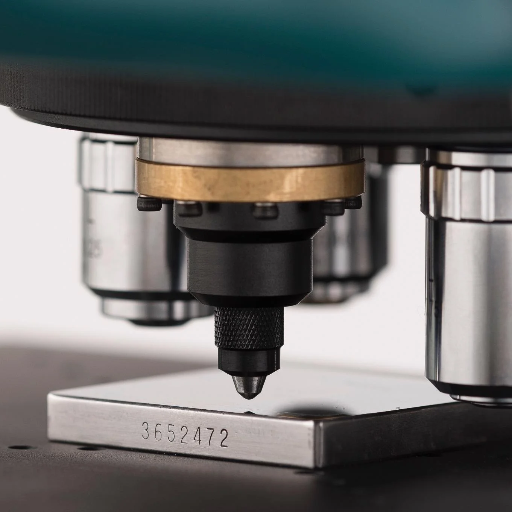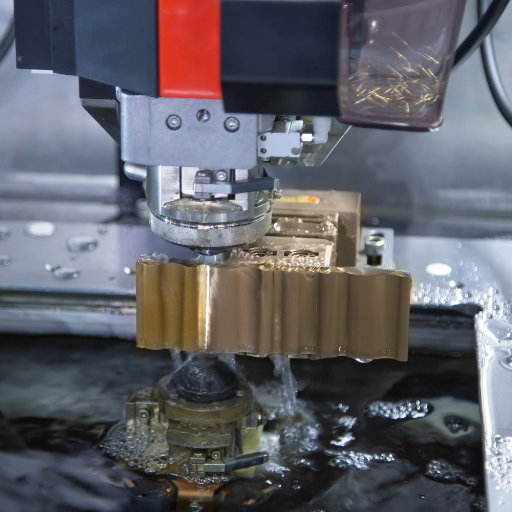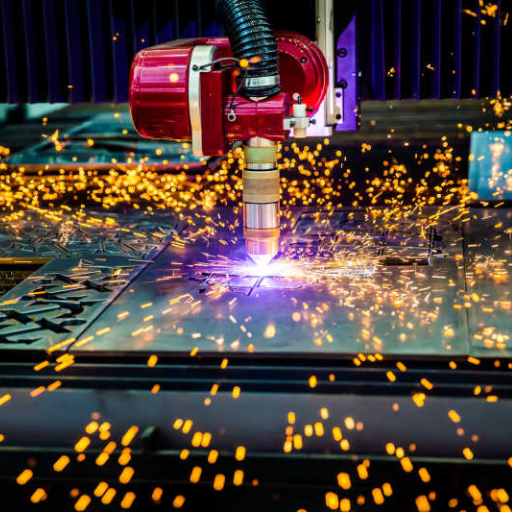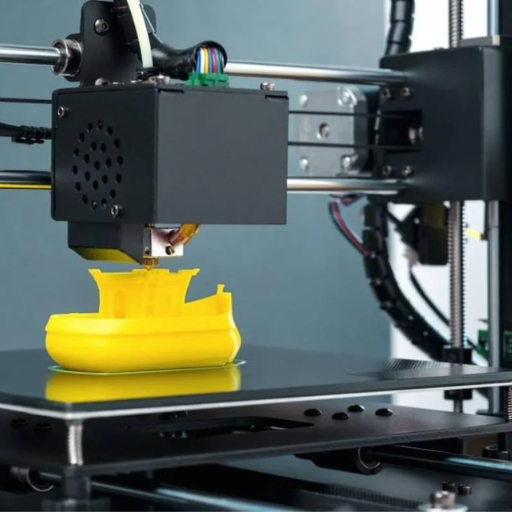The significance of material hardness is far-reaching in different sectors including manufacturing and metallurgy, engineering, and construction. The test analysis establishes how resistant a material is to deformation, wear or scratching thus making it an important tool in quality control, material selection and product design. In this article we will present a broad survey of the various methods of testing hardness, the scales commonly employed when measuring hardness and uses of these measures in industrial situations as well as in research laboratories. This article will give a simplified definition of hardness testing; its performance summary as well as interpretation of the results obtained from such tests.
What is the definition of hardness and why is it important?
Cognizance of hardness definition
Hardness is the ability of a material to resist deformation, particularly permanent deformation, scratching, cutting or abrasion. It is an important attribute that shows how well a material will perform under mechanical wear and stress conditions. An understanding of hardness is necessary as it directly affects the durability and usability of materials in different applications. For example, materials with high hardness values are generally more resistant to wear and thus are most suitable for applications requiring high strength and long life.
The importance of hardness in materials
Hardness significantly determines the performance and life span of materials in different applications. This means that when manufacturing or constructing surfaces for use, choosing appropriate hardness is crucial to make sure they bear the forces they will be exposed to during utilization. Tougher materials tend to withstand wear better and so these make them good choices for cutting tools, abrasives as well as surface with excessive friction levels. Also, determining material’s hardness can help in ensuring quality control by checking whether products meet certain standards and work properly within operations that were expected from them. Henceforth, hardness constitutes a basic characteristic that governs selection of materials along with their longevity and functionality at large.
How hardness affects ductility and wear resistance
Hardness varies with ductility in most cases. In materials as their hardness increases, their ductility decreases or its ability to deform permanently. This is mainly because harder materials are usually more fragile and offer less energy absorption before they break. For example, hard high-carbon steel has lower ductility than the soft low-carbon steel.
On the other hand, resistance to wear of a material is directly proportional to its hardness. Because they do not wear away easily under pressure or scrape off; hard materials have good friction and wear properties. Ceramic materials are very hard, hence have good wear resistance thereby making them suitable for use in cutting tools and grinding wheels.
Technical Parameters
Hardness (H):
- It could be measured by either Mohs scale, Vickers scale, Rockwell scale or Brinell scale.
- More brittle but better wear resistant materials will have higher values of hardness.
Ductility (ε):
- It is often expressed as percent elongation or reduction in area at failure.
- Materials that exhibit high levels of plastic deformation prior to fracture possess an elongation greater than 10%, whereas brittle materials have much lower value for this parameter.
Wear Resistance (WR):
- This is commonly accessed by methods such as pin-on-disk tests.
- Lower rate of wearing occurs with harder substances meaning that these substances have higher WRs
For engineering and manufacturing processes it is important to understand how the variations among the three features namely hardness, toughness and impact strength affect material selection. It is therefore possible through careful consideration of these traits pertaining technical parameters to maximize on material functionality under tailored application environments where this balance can be tapped into in order to engineer superior product designs.
What are the main hardness test methods?
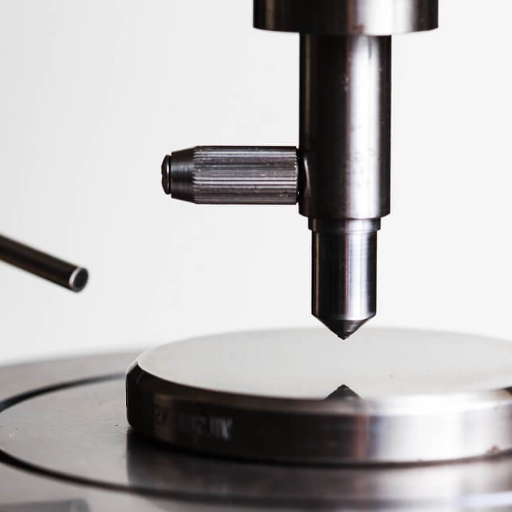
The Brinell hardness test in a nutshell.
Determining material hardness by measuring the diameter of the resulting indentations using a carbide ball or hardened steel is known as Brinell hardness test. For example, a ball approximately 10 mm in diameter is pressed into the surface of the material under an applied load commonly equal to 3,000 kgf for steels and 500 kgf for softer materials. The measurement of this indentation is done using an eyepiece micrometer microscope. This technique is particularly useful for materials with coarse or nonuniform grain structures because it provides an average hardness over a larger area than other methods.
How to do Rockwell Hardness Test
The first step that I always take when performing Rockwell hardness test is choosing either diamond cone indenter or hard steel ball depending on material which I want to test. The next thing that I do prior to this process involves putting the specimen on the anvils of testing machine and making contact with indenter with its surface. Afterwards, I apply minor load also known as preliminary test force equal to zero-reference position (which amounts to 10 kgf). Next comes the major load which ranges between scales but usually takes values like 60,100 or even 150 kgf. During this time,I will have released minor load while still keeping major one intact after holding it for certain length of time indicated by particular standard.Ideally, dials are designed in such a way that they provide automatic indication while some machines might display figures electronically upon depressing their keys then latter giving results in digital format.The value of Rockwell’s hardness is read off from analogue dial when another needle shows depth made by major load.
Understanding Vickers’s Hardness Test
I use Vickers’ Hardness Test which can be used across different materials thereby enabling me identify material’s level of brittleness.This involves pressing the diamond pyramid indenter with square base and an angle of 136 degrees together with the opposing faces into the surface of a sample. The test force is constant and normally ranges between 1 to 100 kgf, depending on material and desired accuracy. Having obtained this indentation, I measure two diagonals that form square using microscope. Moreover, this method is appealing in that it can be applied to soft as well as hard materials and offers a continuous scale of hardness throughout.
Exploring Knoop Hardness Test
For instance, knoop hardness test is another way I use for identifying materials that are brittle or thin.The principle behind this method involves pressing a diamond indenter with rhombic base into the specimen at particular test load ranging from few grams up to several kilograms, depending on precision required and nature of material.Accordingly,the resulting indentation has not been made symmetrical but shaped like an elongated one with only one diagonal far longer than other.
One among its major advantages is specifically applicable to very hard materials which are also brittle like glasses.Owing to their being elongated shapes for indentations,crazing is minimized during testing even on delicate surfaces or coatings hence obtaining true results.Subsequently,this technique brings about accurate measurements in subtle areas leading it an essential tool within my box of testing samples for certain degree of strength across wide applications.
How is hardness measured?
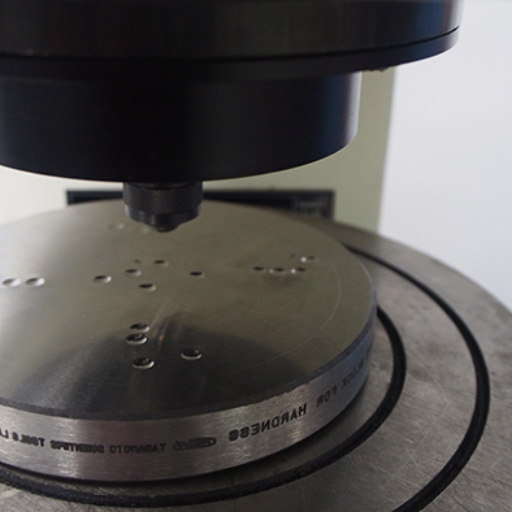
Explanation concerning the techniques for indentation.
Some of the common methods include Brinell, Vickers and Rockwell tests which I usually perform using three prominent ways.
This test employs an indenter with a hardened steel or carbide ball that is forced to bear heavily on it, making it appropriate for soft metals or materials having coarse structures. Based upon the size of the indentation, I deduce the diameter of this depression and subsequently determine this as Brinell Hardness Number (BHN).
The diamond pyramid indenter used in Vickers test makes it possible to use different loads hence suitable for both soft and hard materials. The square shape impression size determines the Vickers Hardness Number (VHN).
Conversely, Rockwell hardness test utilizes either diamond cone or hard steel ball under which penetration depth was measured compared to a small preload thereby providing direct hardness readings on different scales essential for very wide range of materials. Any one of these techniques enables accurate determination of hardness depending on unique properties or testing condition.
Factors that influence results
Several factors can affect the accuracy and reliability during hardness tests. It’s basically important to note that surface preparation is crucial; poor surface quality may give false reading due to distortions caused by indentations by any impurities or non-homogeneous layers present onto its surface. To eliminate their effects, I always clean up my sample surfaces so well such that they remain free from them.
Also, the machine calibration used for testing must be precise in terms of its indenter. Mostly with worn out tips or damaged points or else slight misalignment within any testing devices will result into much difference in expected analysis. Regular confirmation as well as fine tuning maintains equipment’s functionality at its optimum.
Further, a few properties like grain size distribution and homogeneity might alter findings too. In some cases when grains are big enough however regularly distributed about a material part then definitely these may have various hardnesses hence I take several impressions and averages them for better precision.
Lastly, test conditions such as temperature and humidity have significant effects on the results. Testing machines are affected by these variations since materials change with atmospheric conditions. By controlling all the variables I am able to get consistent results. Using this approach, it is possible to obtain hardness readings that can be repeated multiple times across different materials.
Significance of indenter and test load
Choosing a suitable combination of test load and indenter is crucial in obtaining accurate hardness measurements that are meaningful. In some cases, particular materials respond differently to loads or indenters thus selection process of appropriate ones is very vital towards more precise outcomes. Wrong choice of any given testing load means that either size or depth of indentation will not be within optimal range required in given material that may result into over deformation or even penetration by indenter beyond its ability to accommodate. Additionally, the kind of an indenter employed like diamond, carbide, steel ball should match its hardness and other characteristics with those found in a tested sample so as to avoid biased findings among others. This way, I am able to use specific hardness tests resulting into reliable data which has implications for improvement purposes only if one basis on properties possessed by such a material.
Which hardness testing machines are used in testing?

Types of hardness testing machines
According to me, there are three basic types of hardness testing machines used in many applications which include; Rockwell, Brinell and Vickers.
- Rockwell Hardness Machine: It is known for its speed and simplicity of operation and it is commonly employed for metals and alloys. It measures the depth of indentation under a major load relative to the penetration caused by a minor load using either a cone-shaped diamond indenter or steel ball.
- Brinell Hardness Tester: This tester best serves materials that are rougher in texture. The diameter of the resulting indentation after a hardened steel or carbide ball has been pressed into a surface at a given load might be measured to evaluate its hardness.
- Vickers Hardness Tester: This machine is characterized by high accuracy and uses a diamond pyramid indenter therefore it can be employed with various materials including thin samples/coatings. The instrument determines indentations through optical microscopy that yield detailed insights into hardness.
These machines have different functions, each designed for specific material or degree of hardness required.
Features and Characteristics of Hardness Testing Machines
Looking into the features and functions of hardness testing machines, some key attributes have stood out from reviews and specifications from top industry websites.
- Rockwell Hardness Tester: It has an automatic load application system and accurate depth measurement for increased speed of testing and repeatability. One vital feature it has is its ability to test a range of metals as well as alloys with less sample preparation making it useful in industry.
- Brinell Hardness Tester: Brinell machines are renowned for their capability to test materials with heavier loads and bigger indenters which minimizes influence of surface imperfections providing more reliable results on rough materials. Additionally, they often come with digital measuring systems that enable easy reading of indentation diameters hence making the testing process more efficient.
- Vickers Hardness Tester: Vickers testers are improved by using diamond pyramid indenter, which guarantees high precision and can be used for different kinds of materials including very thin or brittle ones. A central function is incorporation of optical systems that meticulously measure indentation geometry; this is essential in applications requiring high accuracy such as microhardness testing.
From all these machines having their own typical features and characteristics, I can identify them based on material properties or required hardness measurement details.
Maintenance and Calibration of Hardness Testing Machines
It is important to ensure that hardness testing machines are maintained and calibrated so that correct readings can be obtained consistently over time. For Rockwell Hardness Testers, regular calibration with certified reference blocks is necessary. This involves known forces being applied onto standard samples then comparing the results against accepted values. Routine cleaning by wiping the indenters together with anvils’ surfaces should not be forgotten because they are sensitive parts.
For Brinell Hardness Testers, keeping large-sized indenters free from damage while ensuring no hydraulic leakage occurs helps maintain good conditions in these machines. Cleaning optical systems regularly to keep off extraneous substances from interfering with indentation measurements is crucial. Standard blocks of the highest quality should be used for calibration and adjustments on the machine made as necessary to match specified hardness values.
As a result, Vickers Hardness Testers need to be accurately calibrated and maintained because they are extremely sensitive. To avoid mistakes, regular checks should be carried out on the diamond pyramid indenter for any signs of wear and tear while ensuring accurate alignment of optical measuring systems. It is important that certified reference materials are utilized in calibrations so that it may ascertain whether or not measurements lie within acceptable tolerances.
I can make sure that each type of hardness tester functions optimally with reliable readings by following these procedures of maintenance and calibration.
What are the various hardness scales used for different materials?
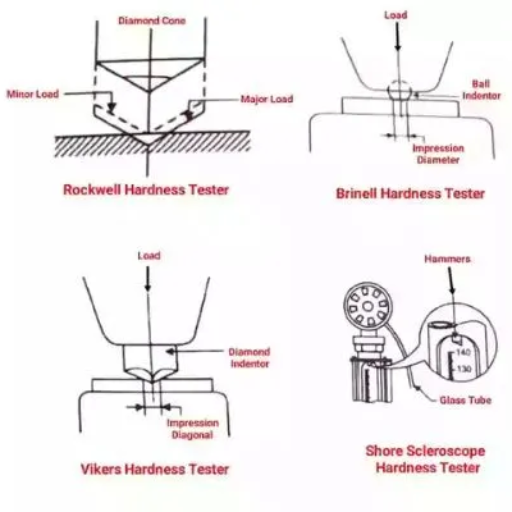
Understanding the Mohs scale of hardness
A qualitative scale called the Mohs scale of hardness, developed by Friedrich Mohs, is used to measure how difficult it is to scratch minerals. This scale goes from 1 to 10, talc having a hardness value of 1 and diamond being as hard as 10. Every mineral on the scale is capable of scratching those below them but not above them. Such a framework helps with identification of minerals as well as understanding their wear resistance and durability. When it comes to practicality, this approach can be applied in geology and material science as a basis for predicting how these materials would behave in real-world situations. I can use my knowledge of the Mohs’ hardness scale to evaluate the suitability of various materials for different applications based on their hardness.
Exploring Rockwell Hardness Scale
The Rockwell Hardness Scale, an important tool employed in measuring the hardness of certain substances particularly metals and alloys. It works by measuring depth into which an indenter penetrates under certain load levels. Different scales are needed for testing different materials and at different conditions such scales include: HRC (hardness measured using diamond cone) and HRB (hardness measured using steel ball).
Rockwell test generally starts with preloading which establishes reference or zero point on minor load gauge followed by major loading. After removing major loading it becomes possible to measure indent depth while software automatically provides corresponding hardness values data based on indent depth level attained without considering operator’s influence Under speed, repeatability, ease-of-use reasons mostly evoking preference over other available methods both in lab and production environments. By knowing how to make use of Rockwell Hardness Scale I will be able to check whether metals have this quality or not within required specifications for their particular application areas.
Differences between Brinell and Vickers hardness scales
There are two distinct hardness measurement methods, the Brinell and Vickers scales; each with their own technical parameter values and areas of interest.
Indenters:
- Brinell: A spherical indenter that is typically made of hardened steel or carbide, with a diameter ranging from 1 to 10 mm.
- Vickers: It uses a diamond pyramid-shaped indenter having a square base and an apex angle of 136 degrees.
Loading Conditions:
- Brinell: Depending on the material being tested it applies one large load (usually ranging between 500 kgf to 3000 kgf).
- Vickers: Appropriate for both macro and micro-hardness testing; it uses a smaller load than Brinell, which can range between 1kgf –100kgf .
Measurement:
- Brinell: This method measures the diameter of the indentation left by the sphere indenter hence used in calculating Brinell Hardness Number (BHN).
- Vickers: The diagonals of the square track formed by pyramidal indenter are measured. The average length of the diagonals and applied load is what is used to calculate Vickers Hardness Number (VHN or HV).
Applications:
- Brinell: Ideal for testing materials with coarse or irregular grain structures like cast metals and forgings. It is widely used in metallurgy and materials science.
- Vickers: Appropriate for wide spectrum materials including metals, ceramics, composites specifically more useful where small samples or surface layers are involved.
From understanding these differences and their respective technical parameters, I can choose the most suitable hardness test technique for assessing material properties so that they meet specified requirements.
How to interpret hardness test results?
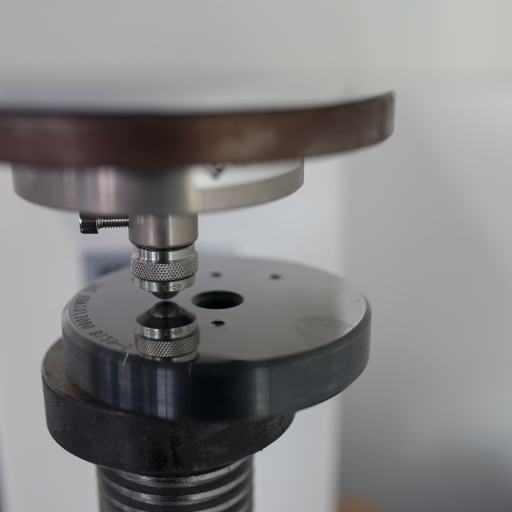
The hardness value analysis
Understanding these numerical values and the significance of materials tested is important in interpreting hardness test results. By making use of hardness values from tests like Brinell and Vickers, it is possible to determine whether a material is hard or soft. However, the potential high grade materials having hardness values will still need to be evaluated with relation to the nature and usage requirements of the specific material being chosen. For instance, in engineering applications, the hardness value can help determine suitability for components subjected to high stress or abrasion. Based on comparison of standard reference charts on different materials’ usage, I can then select my materials prudently.
Common problems and solutions in interpreting test results
Some challenges that come along with interpreting data gathered through this method are presented below. One particular issue that crops up is variability in results due to surface conditions. This may result misleading values of hardness if the surface preparation before testing has not been properly done by a technician. As a way out, I have therefore ensured that during tests, the surfaces that are used remain clean as well as polished according to specification.
Another problem comes up when indenter sizes and applied loads differ resulting into inconsistencies in results obtained. Hence it is essential for me always ensure also that I am using an appropriate type of indenter size together with load per test.
Moreover calibration errors reduce precision of measurements taken for any purpose relating to evaluating a substance’s resistance properties such as strength or stiffness; hence they are usually avoided by calibrating testing equipment regularly according to manufacturer recommendations.
Lastly, interpreting results from different hardness tests such as Brinell versus Vickers because they use different scales and units can be difficult. Comparisons can be easily made accurately by either converting all values into one scale or using conversely charts.
Improved reliability and accuracy for my H-T Interpretations are achieved through addressing these common issues.
Applications of hardness information in industry
In various industrial sectors, the relevance of hardness information is highly significant. For instance, in the manufacturing sector, it is through such tests that materials are chosen for use in parts like gears and bearings that face high rates of abrasion to ensure their longevity and performance. Additionally, hardness measurements serve as a basis for assessing suitability of materials used in construction industry for making structural components which contribute towards durability and safety of buildings and other infrastructures. The automotive industry regularly performs hardness testing to optimize part performance and safety under extreme loading situations. By incorporating data on hardness, I can deliver quality products across these industries as well as others thereby increasing dependability and functionality at large.
Reference sources
1. Online Article: “Hardness Testing: A Comprehensive Guide” – Buehler
- Source: Buehler
- Summary/Annotation: This article from Buehler provides an in-depth overview of hardness testing, discussing different methods such as Rockwell, Vickers, Brinell, and Knoop hardness tests. It explains the principles behind each method, the types of materials they are best suited for, and how to properly conduct these tests. The guide also covers various hardness scales and their applications in industries like metallurgy, manufacturing, and quality control. Buehler is a recognized leader in materials preparation, testing, and analysis, ensuring highly credible and practical insights. This source is valuable for readers seeking a thorough understanding of hardness testing techniques and their applications.
2. Academic Journal: “Advancements in Hardness Testing Techniques: A Review” – Materials Today
- Source: Materials Today
- Summary/Annotation: This peer-reviewed paper published in Materials Today reviews recent advancements in hardness testing techniques. It includes detailed discussions on new technologies, improved methodologies, and the development of novel hardness scales. The study presents experimental data comparing traditional and modern hardness testing methods, along with case studies demonstrating practical applications in various fields, such as materials science and engineering. As an academic journal, this source offers high credibility and technical depth, making it essential for readers interested in a rigorous scientific understanding of the latest developments in hardness testing.
3. Manufacturer Website: “Understanding Hardness Testing: Scales and Instruments” – Wilson Instruments
- Source: Wilson Instruments
- Summary/Annotation: Wilson Instruments’ website provides comprehensive information about hardness testing equipment and procedures. It covers various hardness testing scales (Rockwell, Vickers, Brinell, Knoop) and the specific instruments used for each method. The site features technical datasheets, operation manuals, and guidelines for selecting the appropriate hardness tester for different materials and applications. It also includes practical advice for maintaining and calibrating testing equipment to ensure accurate results. Wilson Instruments is a leading manufacturer of hardness testers, providing authoritative and practical insights relevant to professionals seeking to implement and understand hardness testing in their work.
Frequently Asked Questions (FAQs)
Q: What is hardness testing?
A: Hardness test is a technique utilized in determination of the resistance to deformation that the material exhibits. This method involves gauge on how much material resists being indented by an indenter.
Q: What types of hardness testing methods are there?
A: Rockwell (ASTM E18), Brinell (ASTM E10), Vickers, Knoop (ASTM E384) and dynamic hardness testings are some different types of hardness testing methods. The selection of a particular method depends on the kind of material and the desired hardness range.
Q: How is the hardness of a material measured?
A: Hardness tests determine how hard or soft a metal is by evaluating either penetration depth or indentation hardness. It does not define the basic nature of any physical property but indicates the wear resistance capabilities of materials.
Q: What factors influence the hardness of a material?
A: Material type, surface finish for specimen and heat treatment are among factors that could cause variation in hardness values between two samples made from same metal alloy. Depending on these things, it is possible to have diverse ranges regarding how hard something might be.
Q: What is indentation hardness?
A: A measure of resistance provided by its surface against being deformed describes indentation hardness. Penetration depth at defined load conditions usually determines this property.
Q: Why hardness testing is important?
A: Hardness tests are crucial for assessing fitness of a material to a particular application, contributing to quality control, material choice and prediction of performance under different conditions.
Q: Can we use hardness tests on larger samples?
A: Yes, some types of hardness tests like Brinell can be specifically used on larger samples or test pieces having coarse grain structure.
Q: What role does the surface of the material play in hardness testing?
A: The surface texture must always be properly prepared for accurate results in hardening testing. Any irregularities of the surfaces may affect the depth of indenter penetration that leads to final hardness measurement.
Q: What is the difference between static and dynamic hardness testing?
A: Static methods involve steady application of forces such as Vickers or Brinell which amounts to continuous pressurization onto an object. On the other hand, dynamic methods require rapid loading which suits materials with time dependent deformation.
Q: How are hardness values reported?
A: Nevertheless, there is specific labeling for all scales for example those employed in Rockwell, Brinell and Vickers scale by which they are presented in their respective measuring units.


